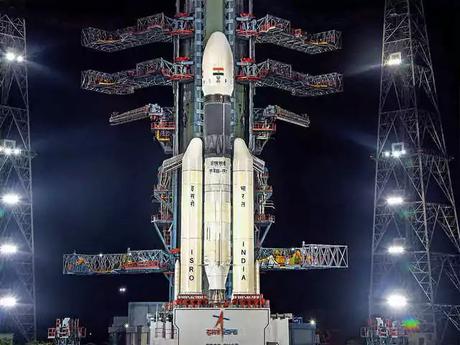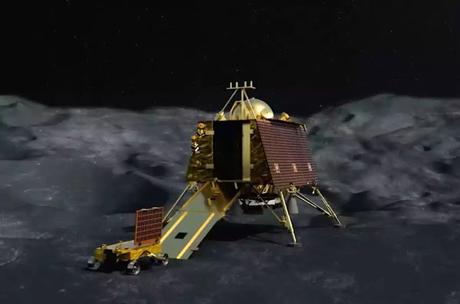
The moon watches over our planet from 239,000miles away. In 1969 Apollo 11 succeeded in its mission to land the first astronauts on the moon… but with the Apollo program abandoned by 1972, humans have still walked on only a fraction of the lunar surface.
So, all these years later, why aren’t we more interested in getting up close to our nearest celestial neighbor? This is Unveiled, and today we’re answering the extraordinary question;
Why is the moon still unexplored?
Getting to the moon was the major goal in the Space Race that raged through the 1950s and ‘60s between the USA and the USSR. And, while the Soviet Union beat the US to most of the other space milestones, it was NASA who ultimately bagged the big prize…landing Neil Armstrong and Buzz Aldrin onto the surface of the moon, in July 1969.
The images and Armstrong’s iconic message back to Earth are records of one of the most defining moments of the twentieth century. In the years following, the Cold War tension that had fueled the Space Race, and the non-stop production of rockets by both sides, gradually eased.
In America, the budget for space exploration was slashed, starting with the cancellation of the Apollo program, which was shelved before reaching its conclusion. All of which means that, as of 2020, only twelve people have ever stepped foot on the lunar surface. And the last of those left the moon almost fifty years ago.
It wasn’t all doom and gloom, though. It was more like a change of tactic. By the 1970s, it had become clear that the future of space exploration was with robots and probes. And, in more recent decades, our machines have continually improved so that now they are our pioneers not just on the moon, but in space in general.
The Soviet Union realized this new direction before NASA did, however. After putting the first satellites into orbit, and even sending the first space probe to the planet Venus, the USSR launched the first successful lunar rover, Lunokhod 1, in November 1970. Lunokhod 1 survived on the moon for eleven months, sending a wealth of data back to Earth for study. Now, we could analyze the moon from a distance, without any need to risk human life.
And in the years since, rovers have remained vitally important for all sorts of space missions. Today, we’ve sent plenty of rovers to Mars, for example. But the world hasn’t forgotten about the moon, with the China National Space Administration deploying a modern-day, state-of-the-art rover, the Yutu-2. It made the trip to the dark side of the moon(the side rarely seen by human eyes) aboard the Chang’e 4 spacecraft, landing in January2019.
Making the dark side it's home, Yutu-2 is in uncharted territory. Despite fifty years of rover missions, however, so much of the moon remains unexplored in detail. There are more than a few reasons for this. The moon is obviously vast, it’s distant, and it has an at times extremely unforgiving terrain. The surface area of the moon is roughly a 14.6million square miles in total.
That’s actually smaller than the world's largest continent, Asia. But it’s still a lot of lands to cover. Back in the ‘70s, Lunokhod 1 traveled at a top speed of less than one mile per hour, meaning it would have taken this particular rover more than sixteen hundred years to completely cover every inch of the moon.
Nowadays, speed still isn’t a priority for lunar vehicles, and the CNSA’s Yutu rovers are actually even slower, averaging at less than 0.1 miles per hour… which means it would take them more than sixteen thousand years to walk the moon. The longest-lived rover so far is the Opportunity rover, which roamed the surface of Mars for just fourteen years… and covered just twenty-eight miles in that time.
Those fourteen years undoubtedly stand as one of the greatest space feats in history, but we clearly still have a long way to go before we build anything that’ll last for centuries! One prominent issue that rovers on the moon face are that the lunar surface is so covered in craters from asteroids. In fact, the moon boasts one of the biggest impact craters we know about in the solar system, the South Pole-Aitken crater, which is more than 1,500 miles across and up to five miles deep.
Landscapes like this aren’t impossible for autonomous exploration, but they do pose a big challenge, not least because all of the ups and downs increase the total surface area, too. But it’s not as though rovers are the only tool we’ve ever used to explore celestial bodies from afar. At the simplest level, we have a long history of observing the moon from Earth, by pointing increasingly advanced telescopes in its direction. But we’ve also dispatched a number of satellites and probes into lunar orbit over the years, as well.
There are many active satellites currently in orbit around the moon

From the India ISRO’s Chandrayaan-2 to NASA’s Lunar Reconnaissance Orbiter. In fact, we’re so well versed with machines in lunar orbit, that we’ve even sent probes to the moon and pointed them back at Earth to get a better look at our own planet, such as with the THEMIS satellites.
The Lunar Reconnaissance Orbiter, or the LRO, is perhaps the best device we’ve ever built to study the moon… and this satellite alone has actually mapped an estimated ninety-eight percent of the lunar surface in 3D. So, in some ways, the moon actually isn’t that unexplored at all! Thanks to modern technology, we can also study lunar rocks and lunar soil remotely, and we can use imagining tools like spectrometers to break down and understand the moon’s chemical arrangement.
We can do all of this without ever risking human astronauts on a crewed mission. But there are crewed moon missions on the horizon. There are plans in motion to put people on the moon, once again. NASA’s Artemis space program is probably the most high-profile project in the pipeline.
The ultimate aim for Artemis is to send the next man and the first woman to the moon… but it has even loftier goals further down the line, too, like the construction of a manned outpost and an orbital space station called the Lunar Gateway. This would be to the moon what the ISS is to Earth, providing room for a constant human presence.
The Artemis Program and others like it, though, aren’t without their critics. Some argue that the goals of Artemis are too vague; that it doesn’t have a clear enough mission statement… and there’s an ongoing debate over whether returning to the moon is beneficial enough to warrant the financial cost. The prospect of living on the moon is certainly exciting, and plenty of people would jump at the opportunity…
But what else is there to justify the expense?

That’s the question being asked by a lot of private space companies, at least… many of which don’t appear to have a huge interest in going to the moon specifically. Not unless it’s to build a lunar launchpad, from which we could (in theory) more easily explore the rest of the solar system instead. In general, the big private companies leading the charge back into space have their sights set on other missions.
Blue Origin, for example, wants to construct an orbital city based on designs from the 1970s by the physicist Gerard K. O’Neill. Meanwhile, SpaceX is primarily focused on getting to Mars. And, although there have been private companies with contracts to explore the moon, including Moon Express, they haven’t accomplished anything of note.
In the early part of the twenty-first century, then, it could be that priorities have changed… and that the Moon is now seen as more a steppingstone on the way to even bigger, better, and even more distant worlds. Or there could yet be hope in the form of space tourism, with the moon one day becoming a popular, short-haul destination in space.
After all, the famous hotelier family, Hilton, reportedly once wanted to build a hotel on the lunar surface. Maybe, one day, this particular vision will be realized. If it was, would you want to stay there? Can you envision taking your vacation so far away from home? All in all, the question of whether the moon is still unexplored really depends on how we define the word, unexplored.
Thanks to lunar orbiter missions, the majority of it has at least been mapped. Thanks to landers and rovers, we’ve also managed to learn more (and in greater detail) about specific regions of it. But the age of human lunar exploration is still yet to take shape. It’s still yet to take off, despite us having first visited the moon more than fifty years ago. What do you think? Is there anything we missed? Let us know in the comments.
Photos Credit: Google Images
